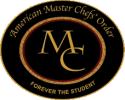The culinary world is not just about taste but is a playground for all senses. One critical element that wraps it all together is the art of plating – arranging food on a plate in an appealing and thoughtful manner.
At Corby Hall, we believe that plating can elevate a good dish to a spectacular dining experience. This art extends beyond aesthetics; it represents a chef’s culinary prowess and a restaurant’s meticulous attention to detail.
Join us as we delve into the importance of plating, its key techniques, and how it can transform the visual appeal of your culinary creations.
The Color Play in Plating
A captivating plate of food truly mirrors a masterfully painted canvas, with every color adding a distinctive touch to the overall appeal of the dish. Much like the careful selection of colors an artist makes to bring their vision to life, chefs too use the natural hues of ingredients to create a visually balanced and appealing plate.
Color is not merely a decorative aspect, it plays a vital role in the psychology of food perception. According to a study published in the Journal of Sensory Studies, color significantly impacts a diner’s perception of the taste and flavor profile of a dish. This phenomenon, known as cross-modal sensory interaction, reveals how our senses of sight and taste are intrinsically linked.
Bright reds can stimulate hunger and anticipation, explaining why ripe tomatoes or bell peppers can make a dish look tantalizing. Green, associated with freshness and health, can enhance the perceived freshness of a dish when utilized correctly, like a sprinkling of fresh herbs or a bed of leafy greens. Neutral colors like browns and whites provide a contrast to vibrant hues and can make them stand out, much like a well-cooked steak on a white porcelain plate.
Creating a color-balanced dish goes beyond making the plate visually appetizing. The colors can enhance or even change the perceived flavors of the dish. A vibrant dish, rich with a variety of colors, can seem more flavorful due to heightened expectations. This is why a multi-colored salad with fresh, bright ingredients often tastes as good as it looks.
Thoughtful color coordination between different food elements becomes a crucial aspect of plating. By understanding and utilizing the influence of color, chefs can create dishes that delight not just the taste buds, but the eyes too, ultimately leading to a more enjoyable dining experience. This careful and deliberate approach to the use of color in plating transforms a meal into a multi-sensory culinary delight.
Less is More: The Principle of Simplicity
The world of culinary plating often adheres to the adage “less is more,” manifesting the principle of simplicity. This philosophy, deeply rooted in minimalism, suggests that a plate should not be overcrowded; each food element should have its own space, its own stage on which to perform its culinary dance. It’s an approach that pushes for clarity and distinctiveness, emphasizing the individuality of each ingredient, rather than masking it in a muddle of components.
Renowned chef Charlie Palmer puts it aptly: “If you can’t see the plate, then you’ve got too much food on it.” This sentiment echoes the value of restraint in plating, an understanding that the negative space on a plate can be as influential as the elements themselves. Much like the careful silences in a piece of music, the blank space on a plate plays a crucial role in the overall composition. It provides relief, a visual pause, allowing the dish to stand out, while also preventing it from appearing overwhelming to the diner.
Simplicity in plating also enhances the perception of a dish. A 2013 study from the University of Leicester found that simpler presentations of dishes were rated higher in terms of perceived taste and value than more complex presentations. This indicates that an elegant, minimalist approach to plating can enhance the dining experience, fostering an appreciation for the dish’s true flavors and textures.
The principle of simplicity in culinary plating aligns with the fundamental pursuit of cooking: to honor and celebrate the intrinsic flavors of the ingredients. By reducing visual clutter and highlighting the essence of the dish, chefs can create a dining experience that’s both aesthetically pleasing and flavorfully authentic.
The Golden Rule of Plating
Certain techniques and guidelines have emerged as game-changers, one of the most significant being “the golden rule of plating”. This technique, steeped in the wisdom of seasoned chefs and artists alike, suggests placing the main component of the dish slightly off-center, usually on the lower half of the plate. This seemingly minor adjustment can dramatically elevate the visual balance and aesthetic appeal of the plate.
The “golden rule,” interestingly, finds its roots in the golden ratio – a mathematical ratio commonly found in nature that has been utilized in art and design for centuries due to its aesthetically pleasing properties. By placing the main element off-center, chefs subtly harness the power of this innate visual harmony, creating plates that are both balanced and dynamic.
Such positioning ensures each element on the plate can bask in its own spotlight, thereby enhancing the overall appeal of the dish. It creates a sense of movement and interest, guiding the diner’s eye across the plate in a purposeful journey from one component to the next. Rather than overwhelming the diner with a central heap of food, the golden rule of plating encourages a thoughtful exploration of the dish, enhancing both the visual and gustatory experience.
The off-center placement of the main component provides ample space for creative additions. Chefs can artfully arrange side components, garnishes, or sauces, introducing additional layers of color, texture, and flavor. These accents, strategically placed, can complement the main ingredient, creating a harmonious composition that delights both the palate and the eye.
The golden rule of plating, thus, serves as a powerful tool for chefs, allowing them to transform their culinary creations into edible works of art. By understanding and applying this rule, chefs can enhance the visual narrative of their dishes, creating a dining experience that captivates and satisfies on multiple sensory levels.
Height & Depth: Adding Dimensions to the Plate
In the creative pursuit of appealing food presentation, chefs turn to architecture as much as gastronomy, manipulating height and depth to transform a dish into a captivating culinary sculpture. This technique, though seemingly simple, can introduce a whole new dimension to the plate, drawing the diner’s gaze and invoking intrigue even before the first bite.
Stacking or layering ingredients is a common method to achieve this vertical allure. It not only gives a sense of abundance but also provides a visual contrast that is aesthetically pleasing. For instance, a stack of pancakes, layered with fresh berries and a dusting of powdered sugar, stands much taller and appears far more enticing than when the same components are served flat on the plate.
Layering also offers an opportunity to play with textures and flavors. Each layer can be a surprise that complements the previous one, creating a complex taste profile that leaves a lasting impression on the diner’s palate. Consider a decadent dessert layered with rich chocolate mousse, crunchy praline, and fluffy cream – each spoonful is a delightful exploration of varied textures and tastes, amplified by the visual charm of the layers.
Height and depth on a plate aren’t just about visual aesthetics; they can significantly impact a diner’s perception of a dish’s value and their overall dining experience. A study published in the Flavour journal revealed that people were willing to pay more for dishes that showcased a higher degree of plating creativity, including elements like height and ingredient arrangement.
By manipulating the dimensions of the plate, chefs can evoke a sense of sophistication and luxury, adding to the perceived value of their culinary creations. From a towering burger to a meticulously stacked salad, height and depth on a plate can transform ordinary dishes into extraordinary culinary experiences that tantalize the senses and leave diners craving for more.
Garnishing: More Than Just Decoration
Garnishes have a significant role in food presentation that extends far beyond mere aesthetics. They are the final touches that complete a dish, serving as an accessory that adds to its flavor, color, and texture, thus shaping the overall dining experience.
In terms of taste, garnishes should be purposeful and harmonious with the main components of the dish. Whether it’s a sprig of mint to complement a lamb dish, a squeeze of lime to add tanginess to a bowl of pho, or a dusting of cocoa on a tiramisu, each garnish should contribute a nuanced layer of flavor that enhances the dish’s overall profile.
From a visual standpoint, garnishes inject color and vibrancy into the plate. Imagine the stark contrast of a fresh green parsley leaf on a plate of creamy pasta, or the pop of red from a cherry tomato in a green salad. These bursts of color make the dish visually more enticing, stimulating the diner’s appetite even before they taste the food.
Texture is another dimension where garnishes play a key role. Crispy fried onions atop a smooth mashed potato or crunchy sesame seeds sprinkled over soft sushi rolls add a textural contrast that makes each bite more interesting and pleasurable.
The strategic placement of garnishes can guide the diner’s eye across the dish, creating a visual journey that leads to a deeper appreciation of the culinary art. For instance, a delicate line of sauce drawn across a plate or a scattering of herbs can direct attention to the dish’s focal points, highlighting the chef’s intent and the dish’s complexities.
Garnishing is a skillful art that involves thoughtfulness and creativity. When done right, it becomes more than just a decoration; it becomes an integral part of the dish that enhances the taste, amplifies the visual appeal, and elevates the dining experience.
The Finishing Touch: Sauce Presentation
Sauces, with their vast range of colors, flavors, and consistencies, offer a potent tool for enhancing both the visual appeal and the taste of a dish. In the context of plating, sauces can be transformed into masterful strokes of art, adding depth and drama to the culinary canvas.
Sauce presentation, when done correctly, can intensify the visual appeal of a dish. It provides a splash of color that contrasts or complements the food’s main components. Think of the vibrant green of a basil pesto against the warm tones of a pasta dish, or the intense red of a berry coulis cutting through the creaminess of a vanilla panna cotta. These color variations can make a dish visually more enticing and inviting.
But sauce presentation is not merely about adding color; it’s also about shaping the diner’s visual journey across the plate. A well-placed sauce can guide the diner’s eye, leading them to focus on certain elements of the dish. For instance, an artfully drizzled sauce can highlight a dish’s main component, while small droplets scattered around the plate can draw attention to the garnishes.
The manner in which sauces are presented can vary widely, each creating a different visual effect. Sauces can be drizzled to create a casual, free-form look or piped for a more structured, formal appearance. They can be smeared across the plate to provide a backdrop for the main elements or dotted around to add an element of surprise. Each technique lends a different aesthetic and can set the tone for the dining experience.
The presentation of sauce also contributes to the narrative of the dish. A rustic, hearty stew might call for a generous, rough spread of sauce, echoing the dish’s homely, comforting nature. In contrast, a delicate, carefully constructed dessert might be enhanced by precise, neat dots of coulis, reflecting its finesse and sophistication.
Sauce presentation is an art form in itself, one that can elevate a dish from ordinary to extraordinary. It allows chefs to inject their creativity into a dish, telling a story that captivates the diner’s eye and tantalizes their palate.
Dinnerware: The Canvas for Your Art
Just as a painter needs a canvas to bring their art to life, a chef requires the right dinnerware to showcase their culinary creations. The dinnerware sets the stage for the dish, subtly influencing the diner’s perception even before the first bite is tasted. At Corby Hall, we are deeply aware of the significant role that dinnerware plays in the overall dining experience, and we take great pride in offering a vast selection of premium commercial tableware to elevate your plating game.
The shape of your dinnerware can radically alter the perception of your dish. Traditional round plates evoke a sense of familiarity and comfort, ideal for homely, hearty meals. For an edgier, more contemporary feel, square or rectangular plates offer a distinct departure from the norm, perfect for showcasing innovative and bold dishes.
The size of your dinnerware also plays a crucial part in your plating. Smaller plates can create a sense of exclusivity and luxury, directing attention to carefully curated, delicate dishes. Conversely, larger plates convey a sense of generosity and hospitality, suitable for abundant, family-style servings.
Color, too, is an essential factor to consider when choosing your dinnerware. A study by the Federation University Australia found that the color of the plate significantly impacts the perceived flavor intensity and enjoyment of the food. White or light-colored plates are often chosen for their ability to let the colors of the food pop, enhancing the visual appeal of your dishes. Meanwhile, darker hues can add an element of drama and intensity, creating a striking contrast against vibrant food colors.
Selecting the appropriate dinnerware goes beyond functionality. It is an extension of your brand, subtly echoing your restaurant’s style and philosophy. Whether you prefer the classic elegance of porcelain, the rustic charm of earthenware, or the modern sophistication of bone china, Corby Hall offers a comprehensive range of high-quality commercial tableware to fit every aesthetic.
Remember, dinnerware is more than just a vessel for serving food; it’s a fundamental part of your culinary story. So choose wisely, because the right piece of dinnerware can transform your dish into a memorable dining experience.
Plating is an art that requires practice and a solid understanding of its key techniques. It is where culinary skills meet creativity, turning every dish into a visual masterpiece. By incorporating these techniques and choosing the right tableware, you can elevate the dining experience at your restaurant.
At Corby Hall, we are committed to helping you achieve this goal. If you’re ready to redefine your restaurant’s dining experience, connect with us today. Every dish you serve is a testament to your passion for food, and we’re here to ensure it gets the stage it deserves.



